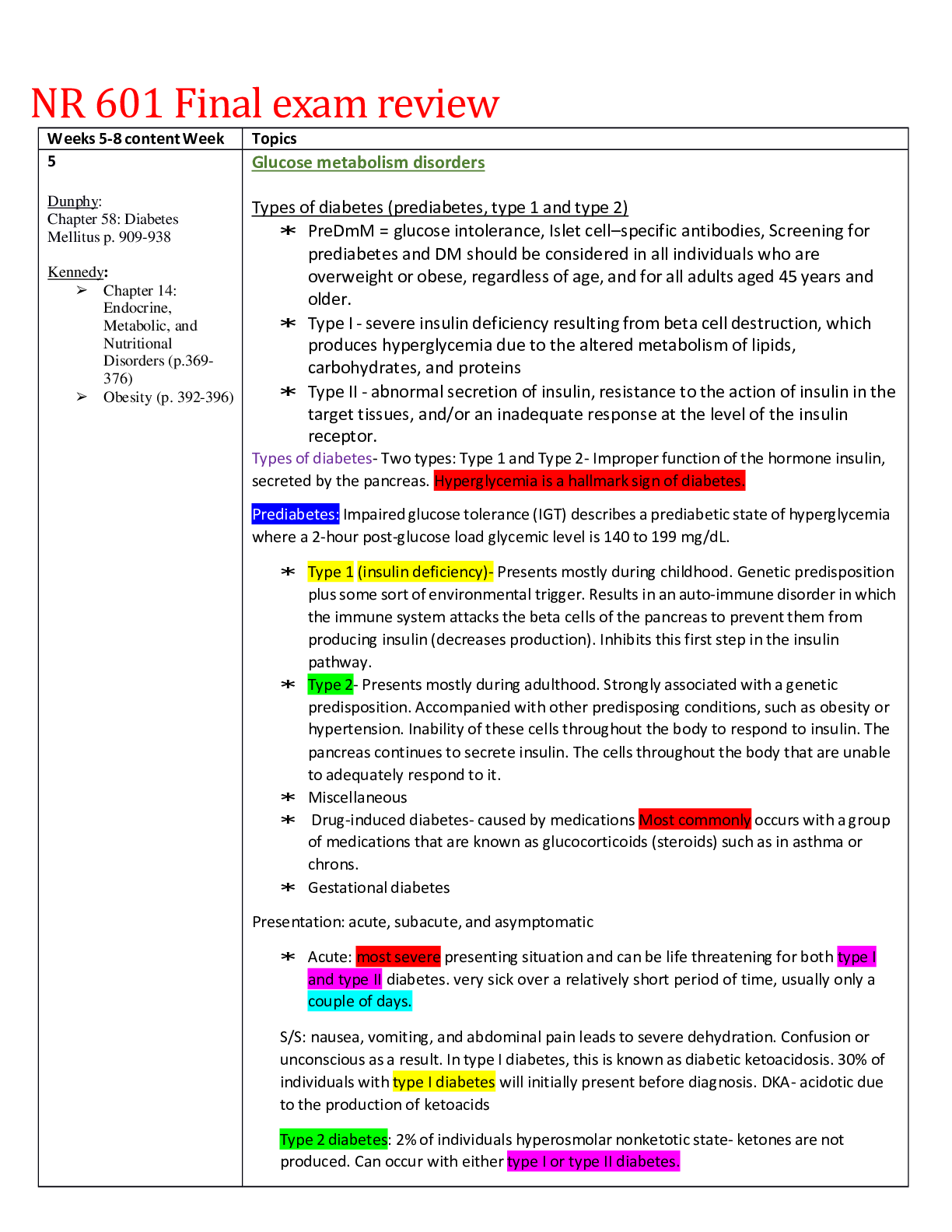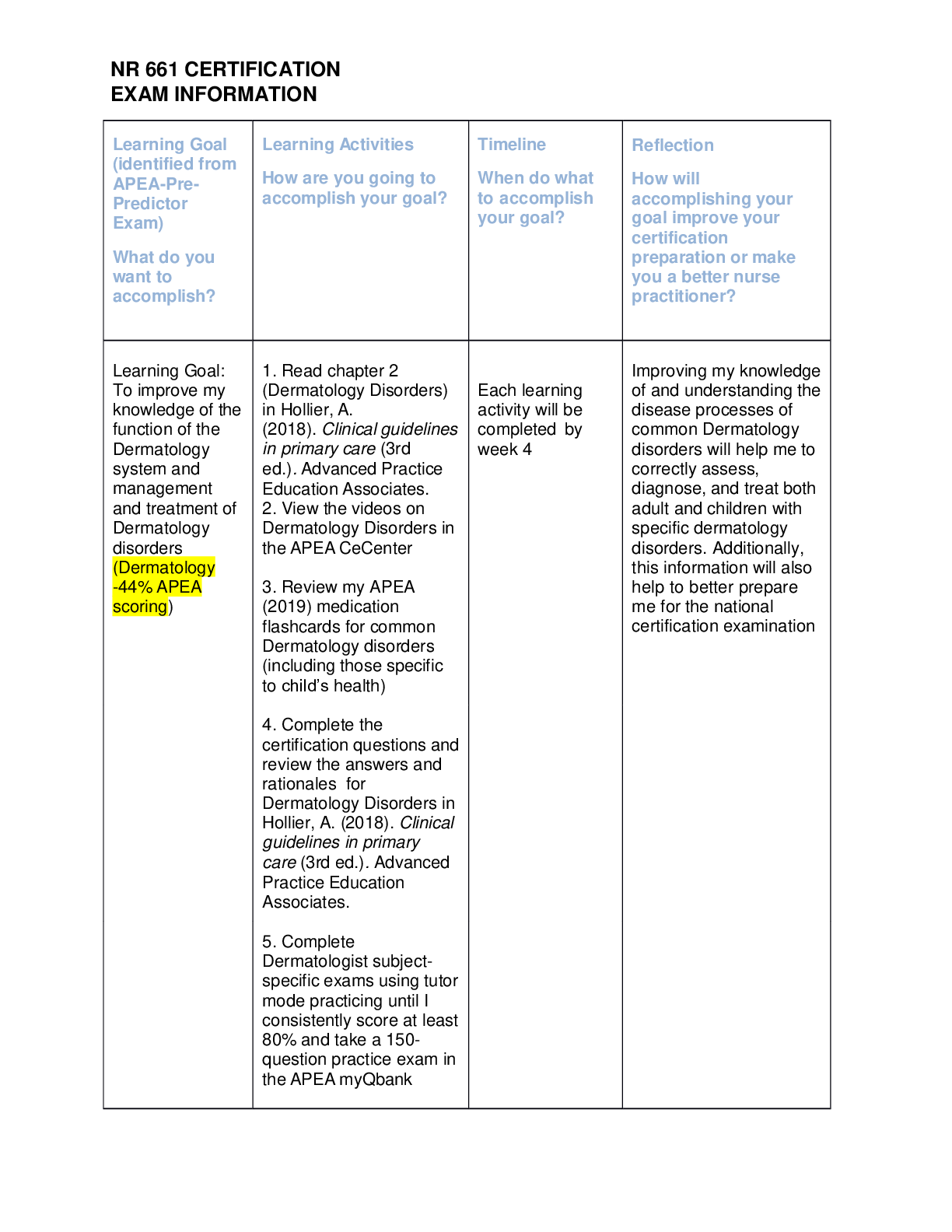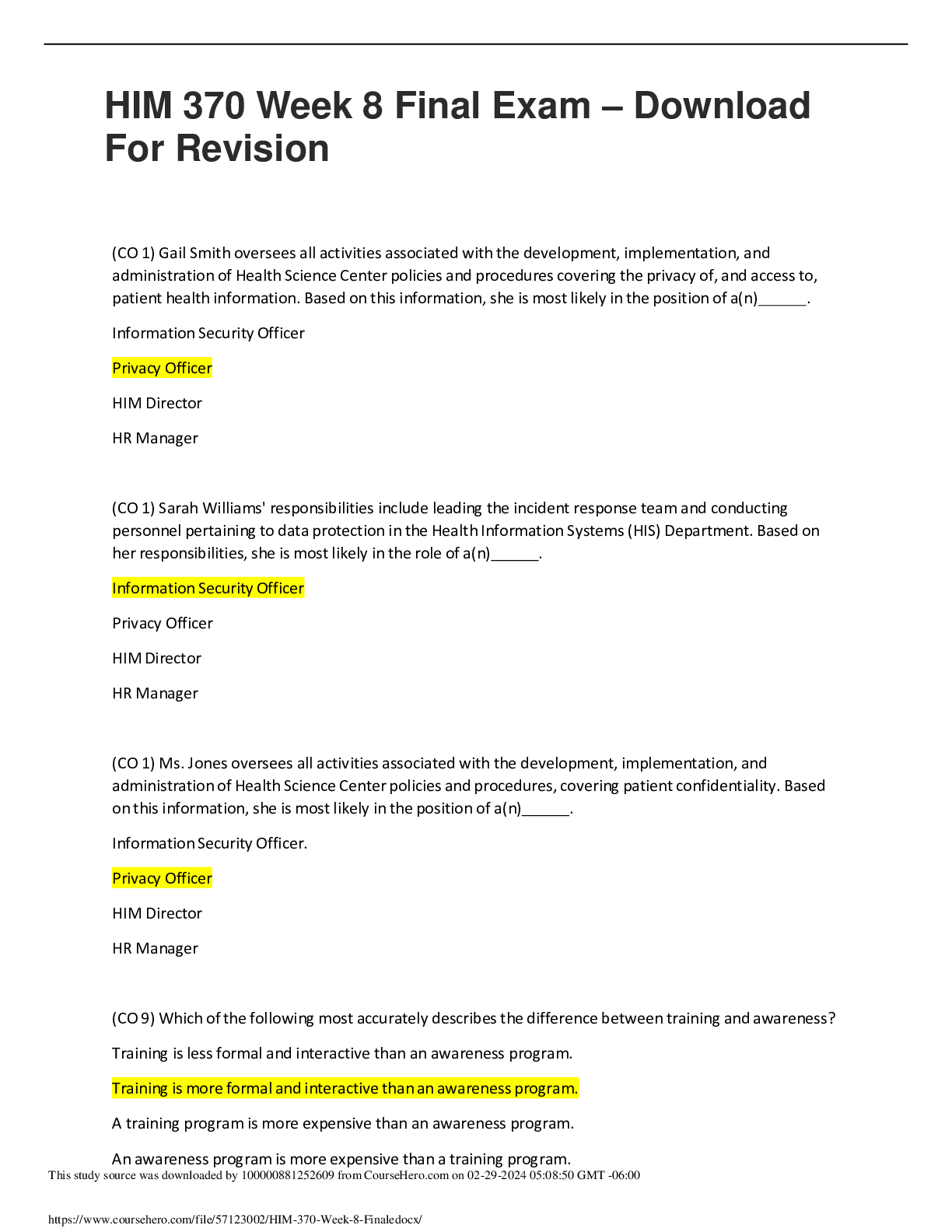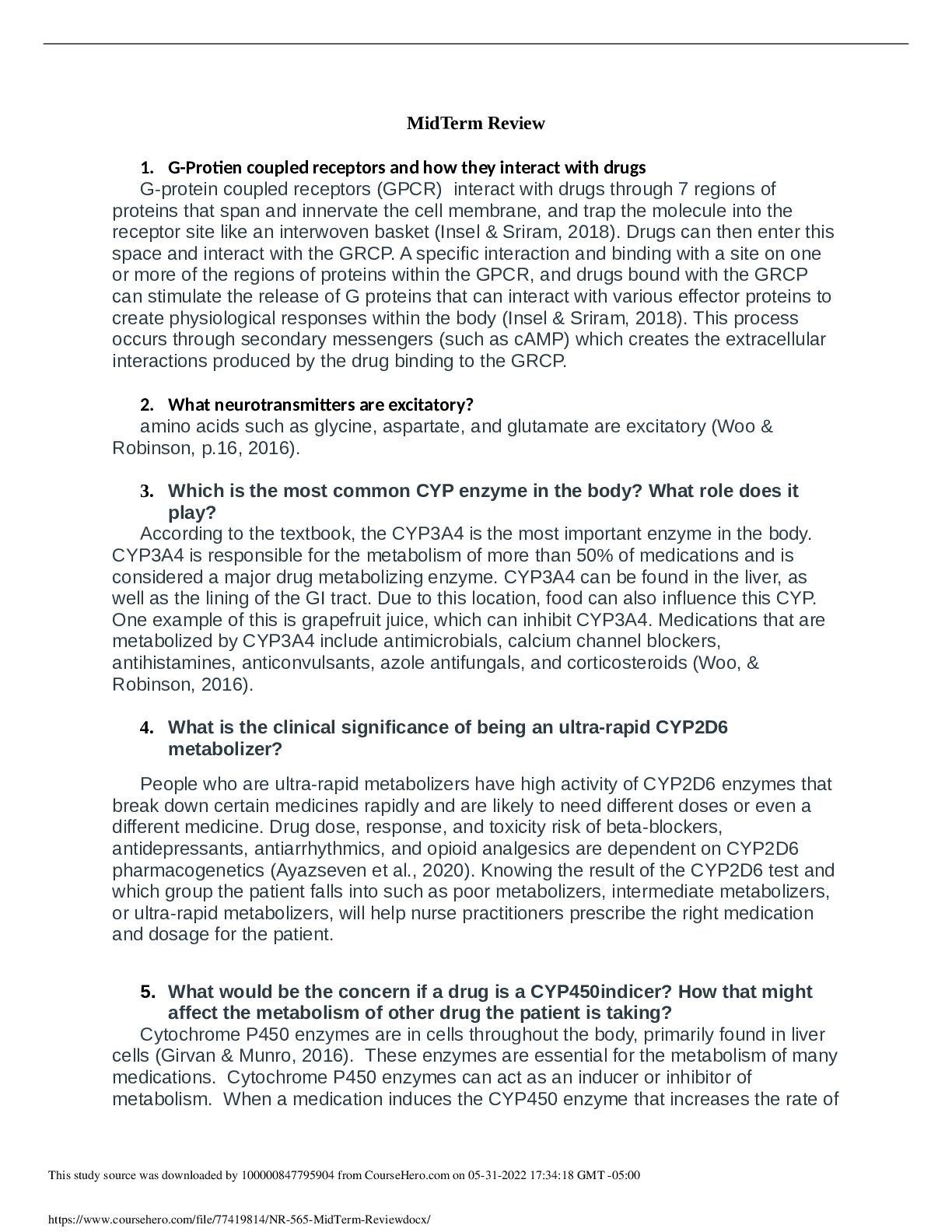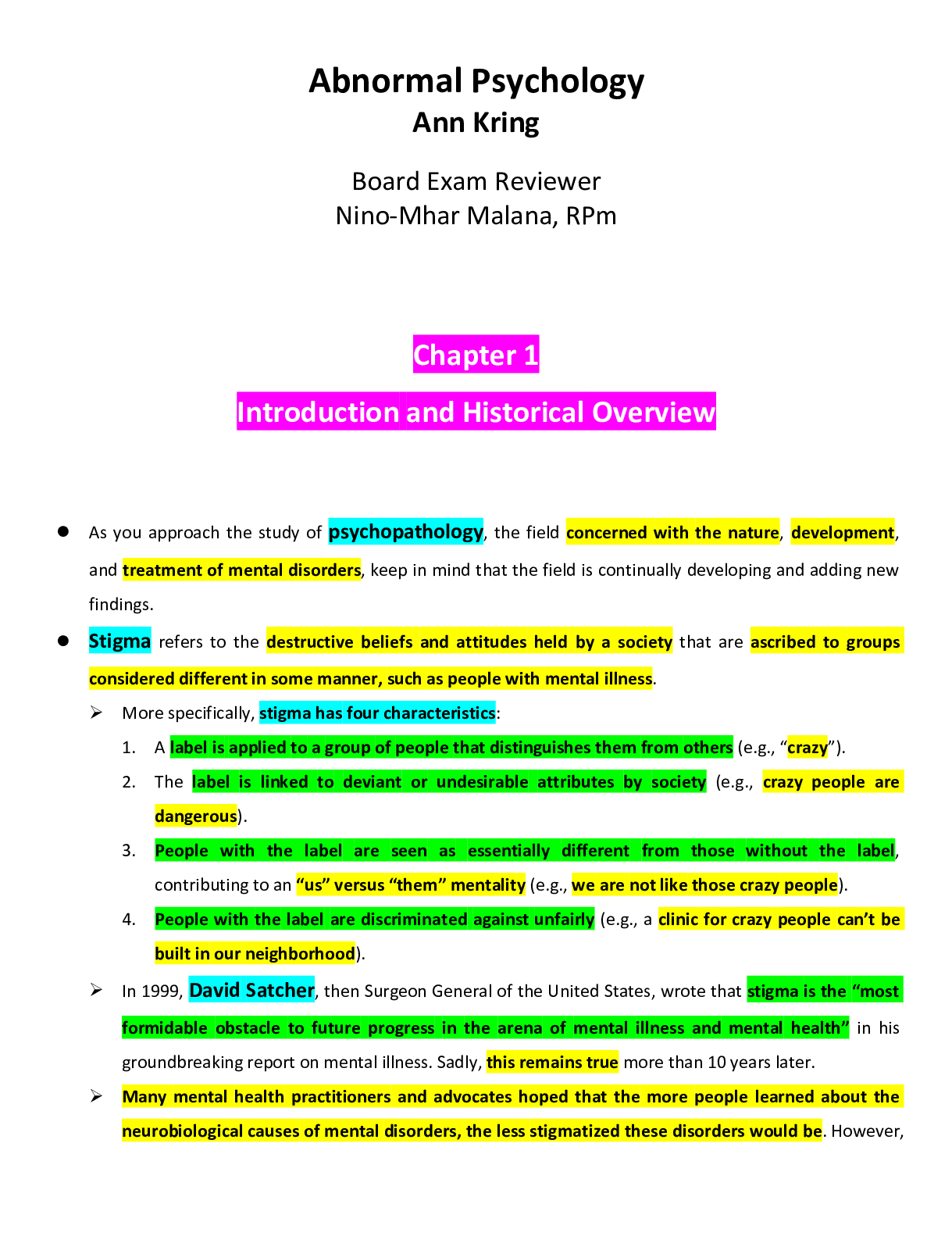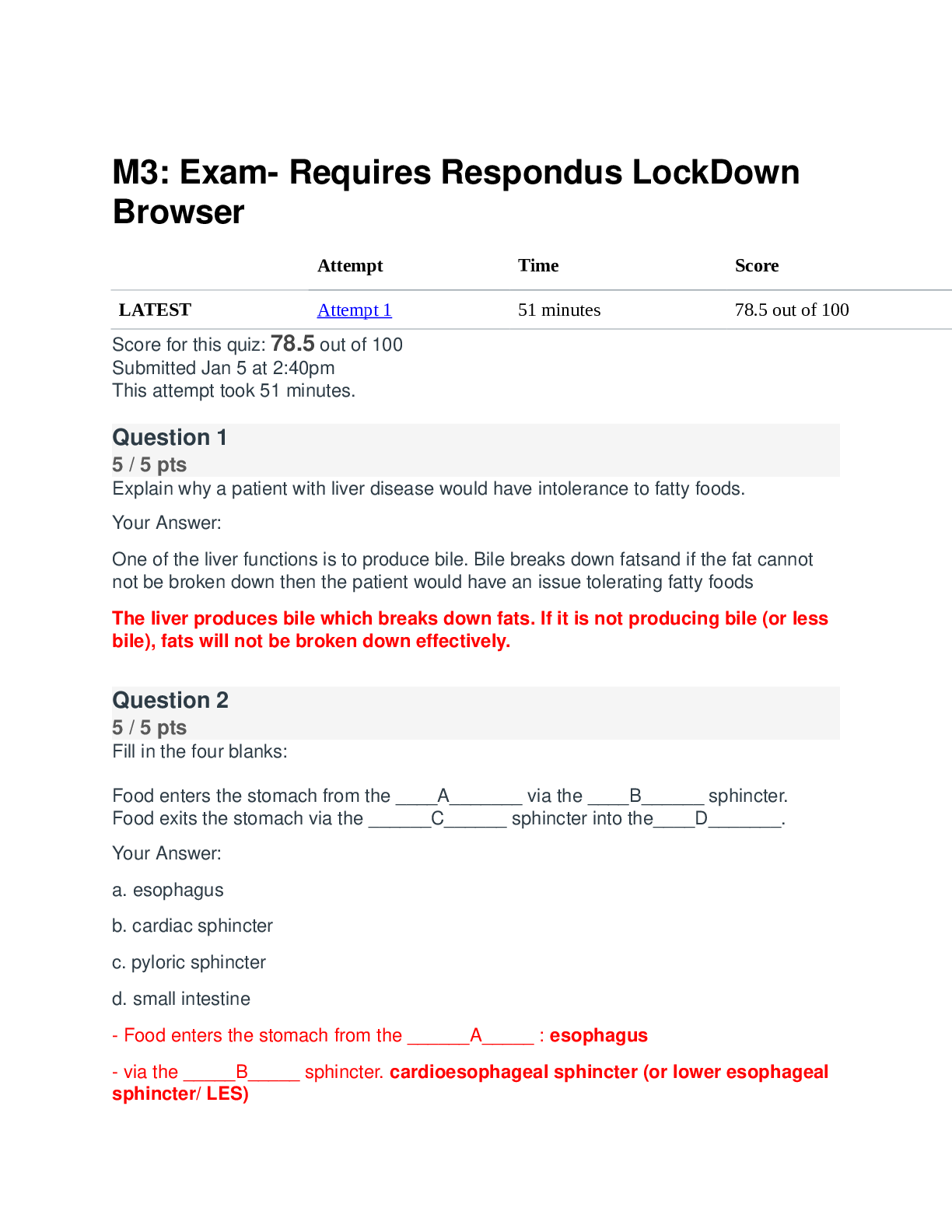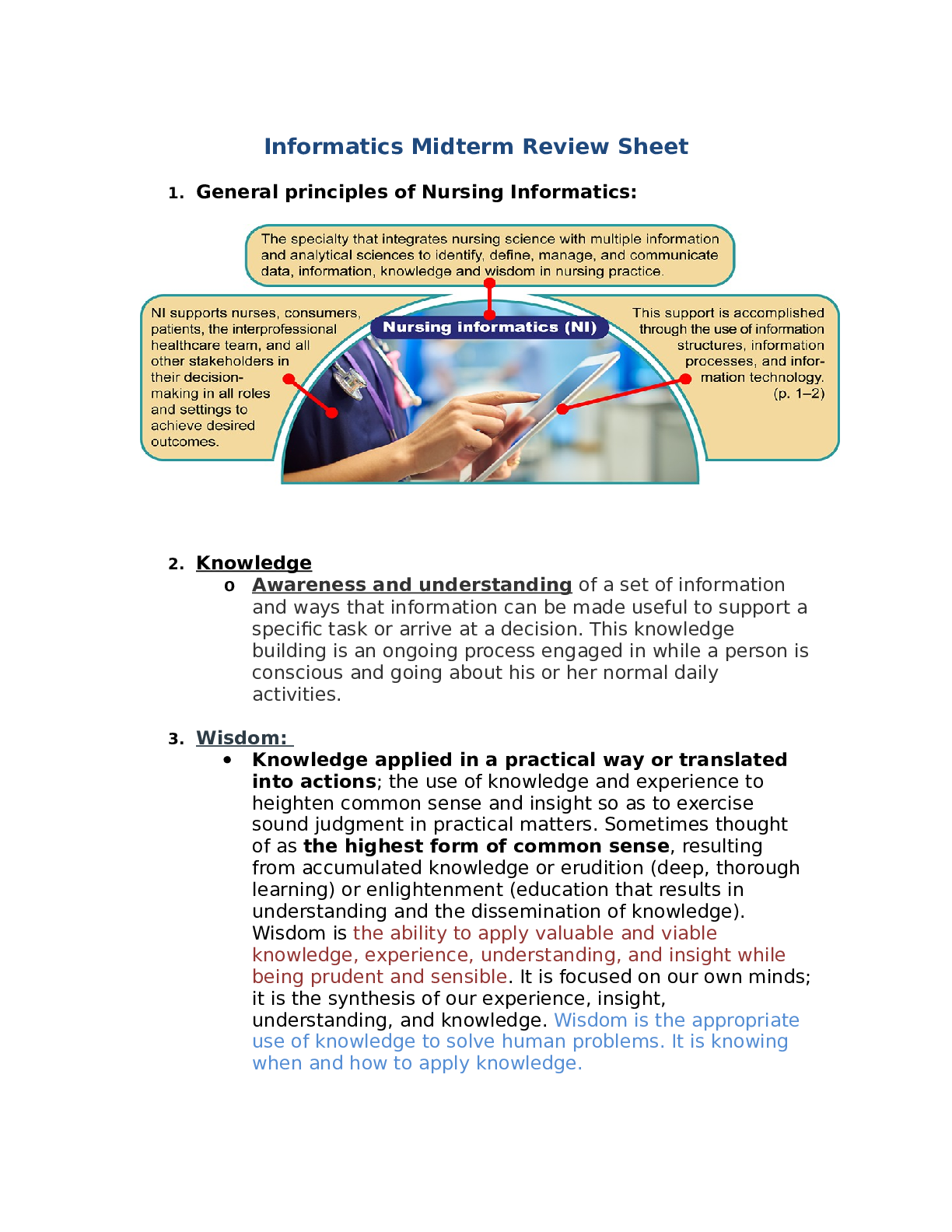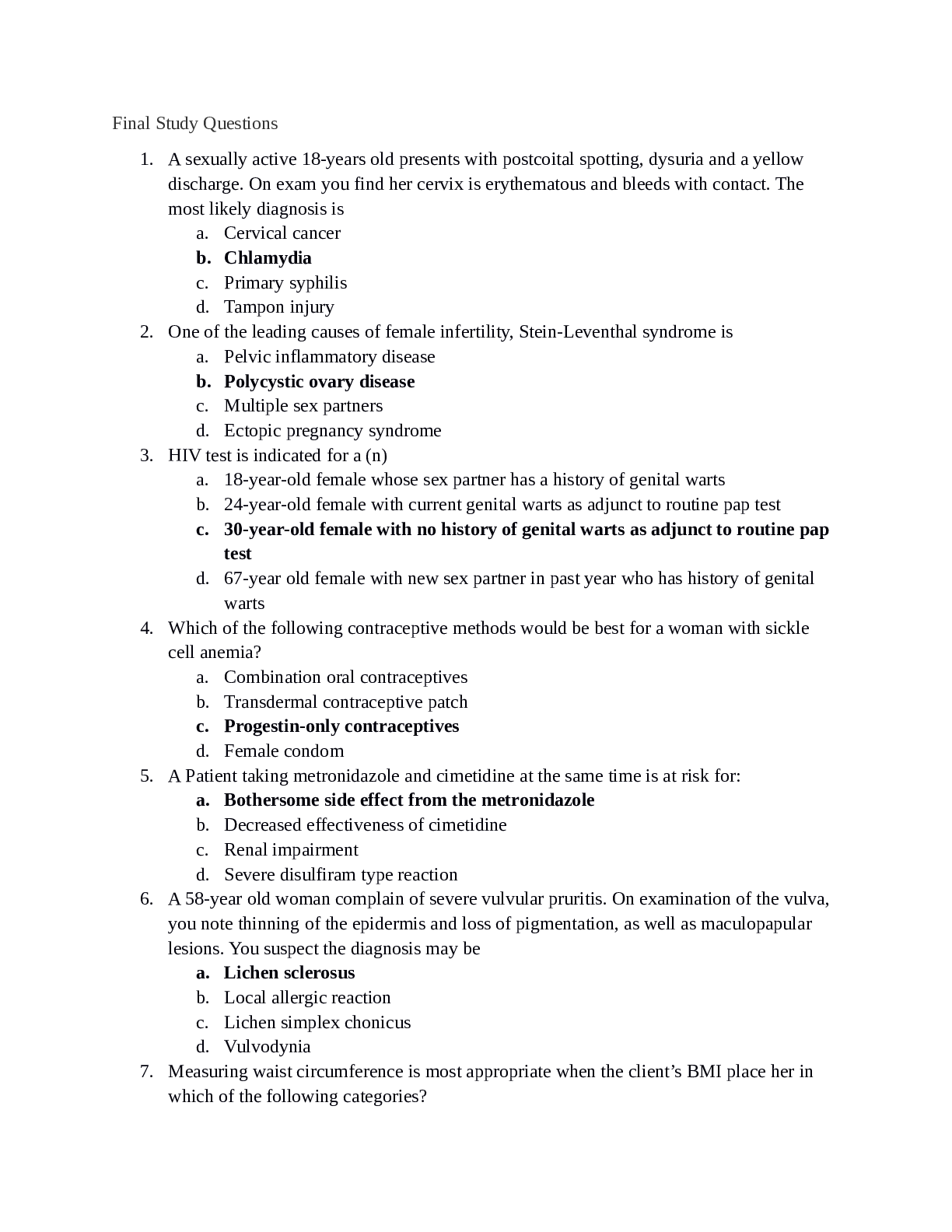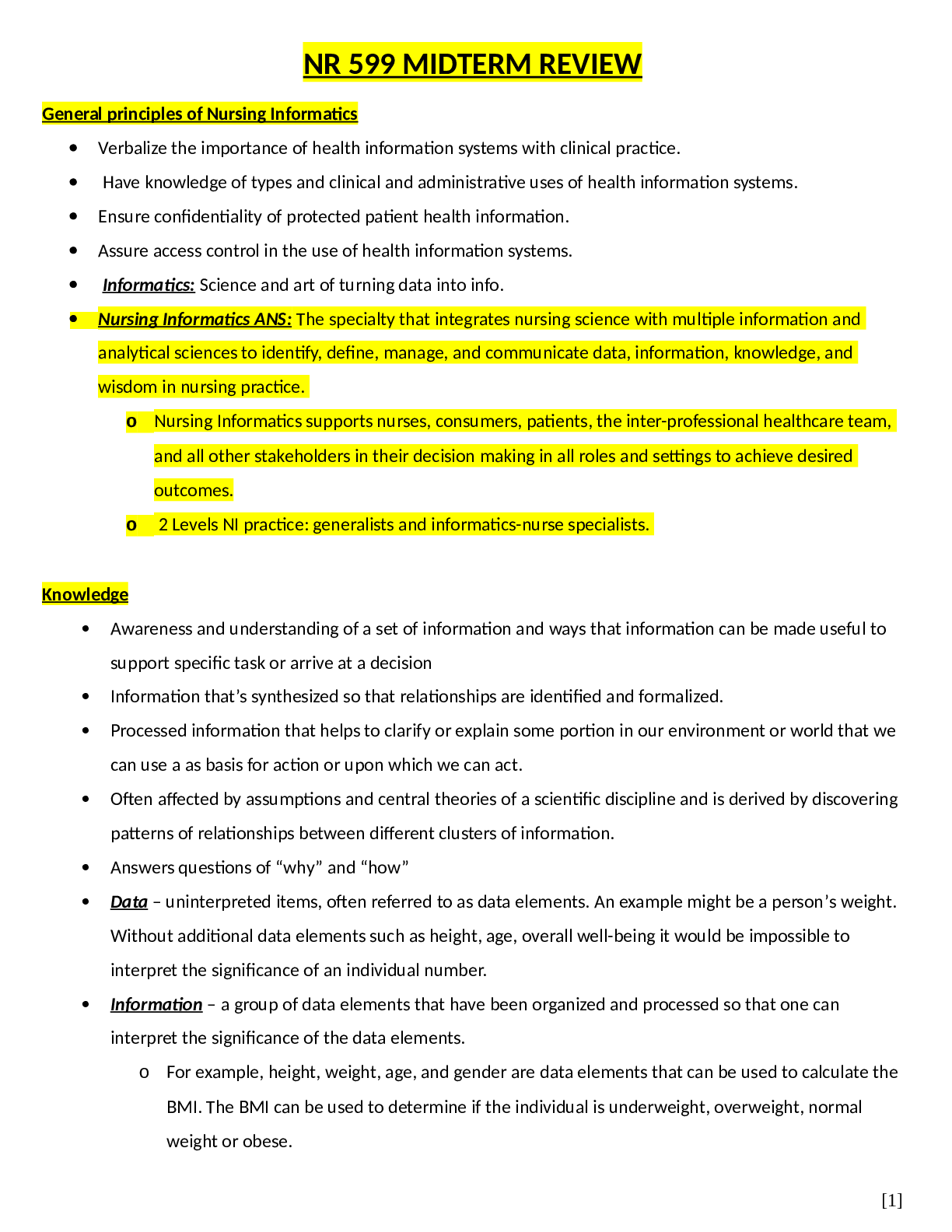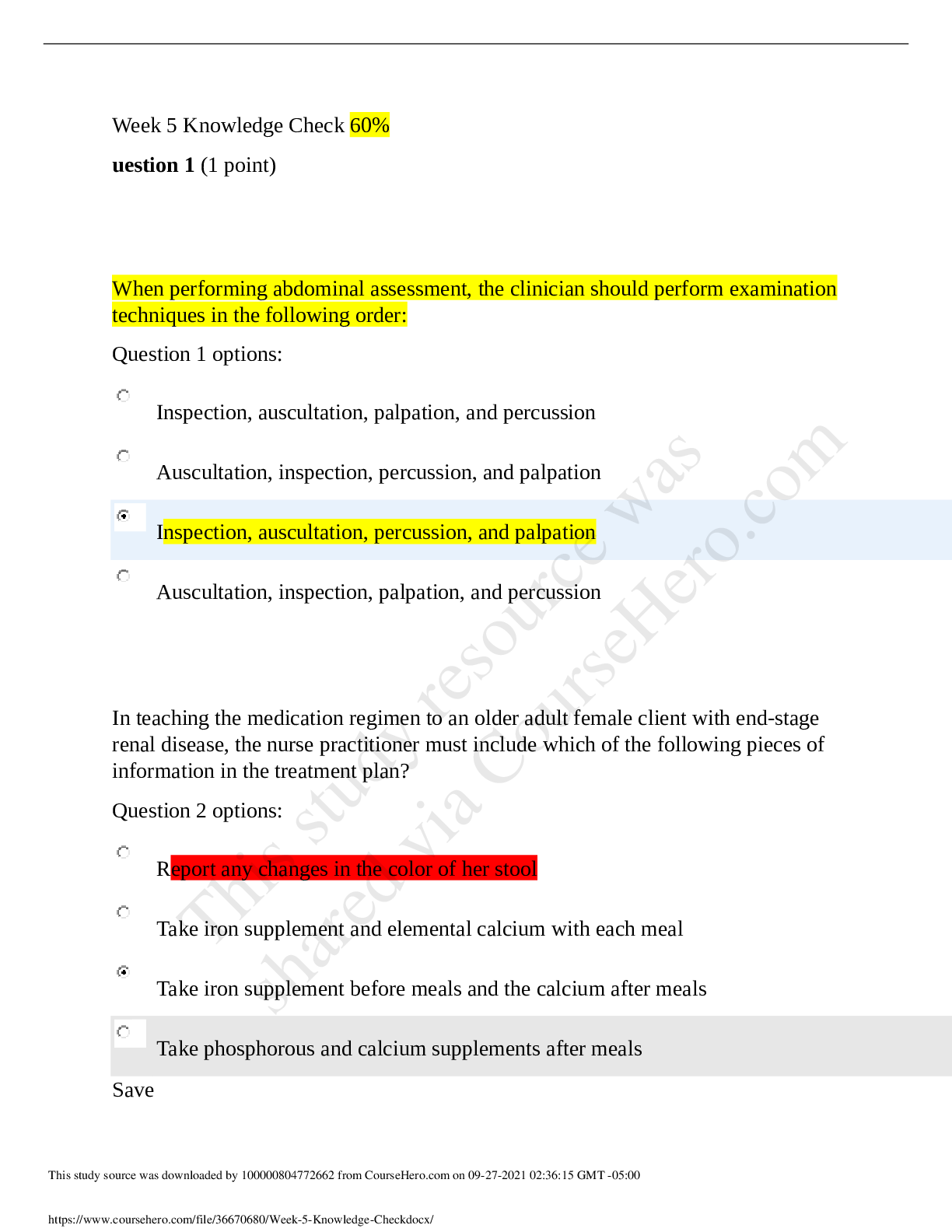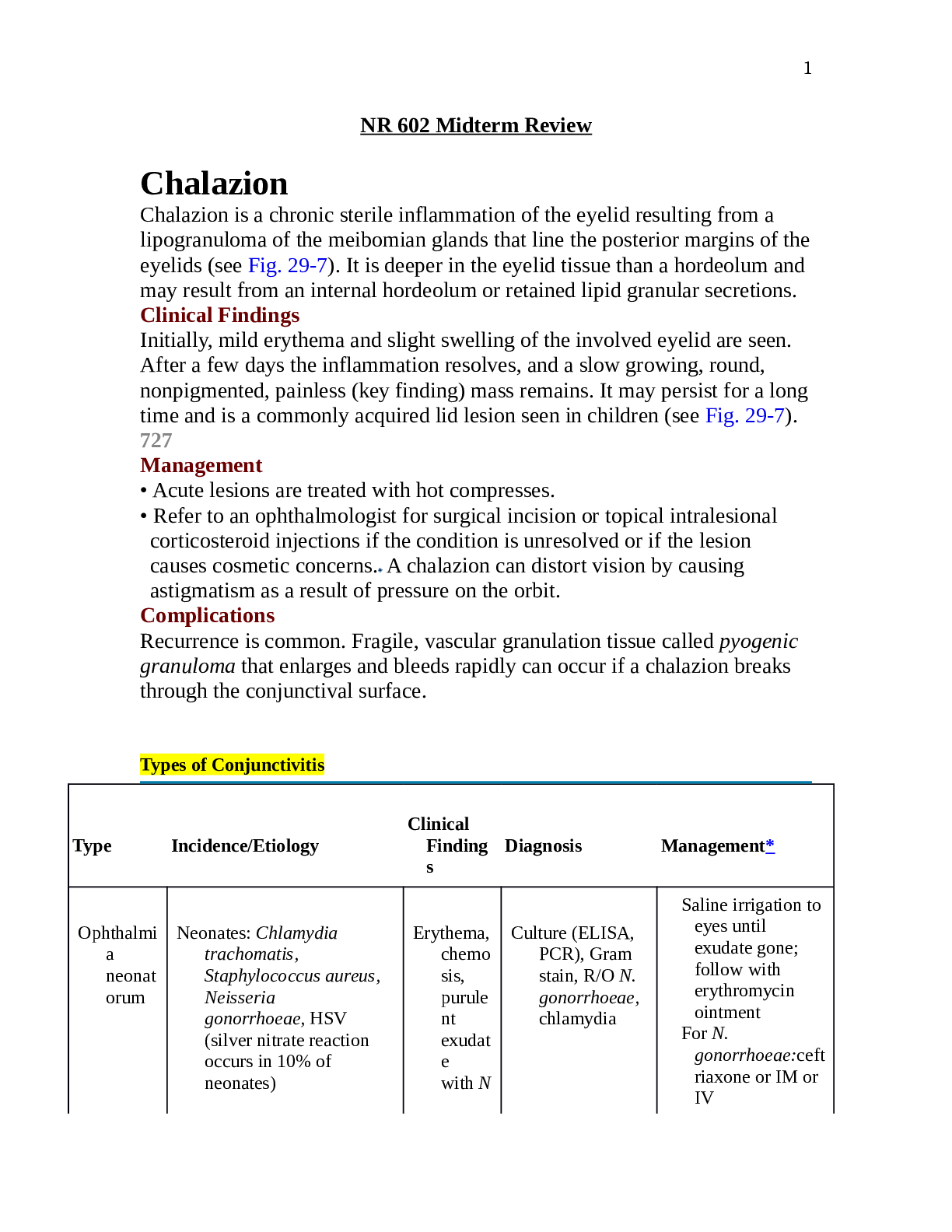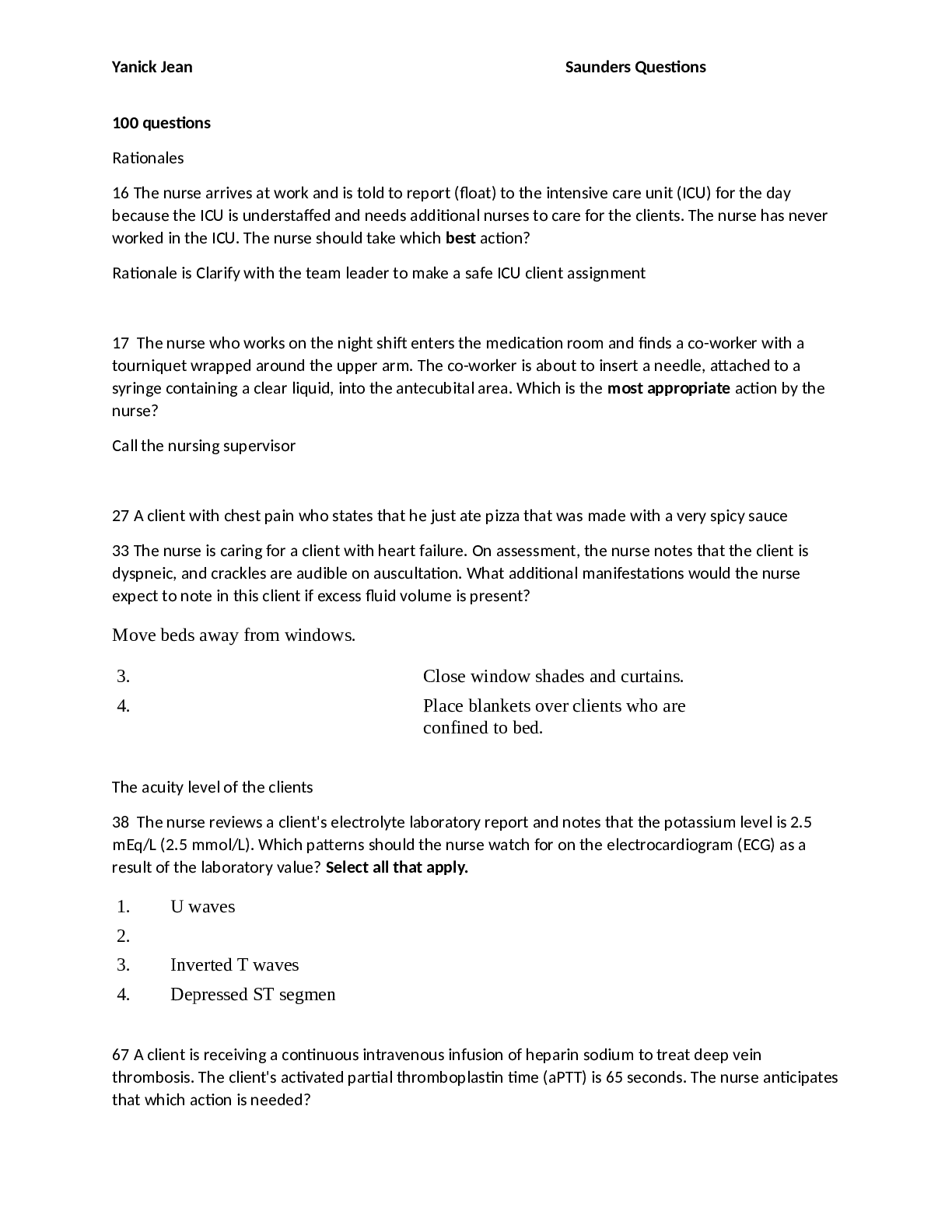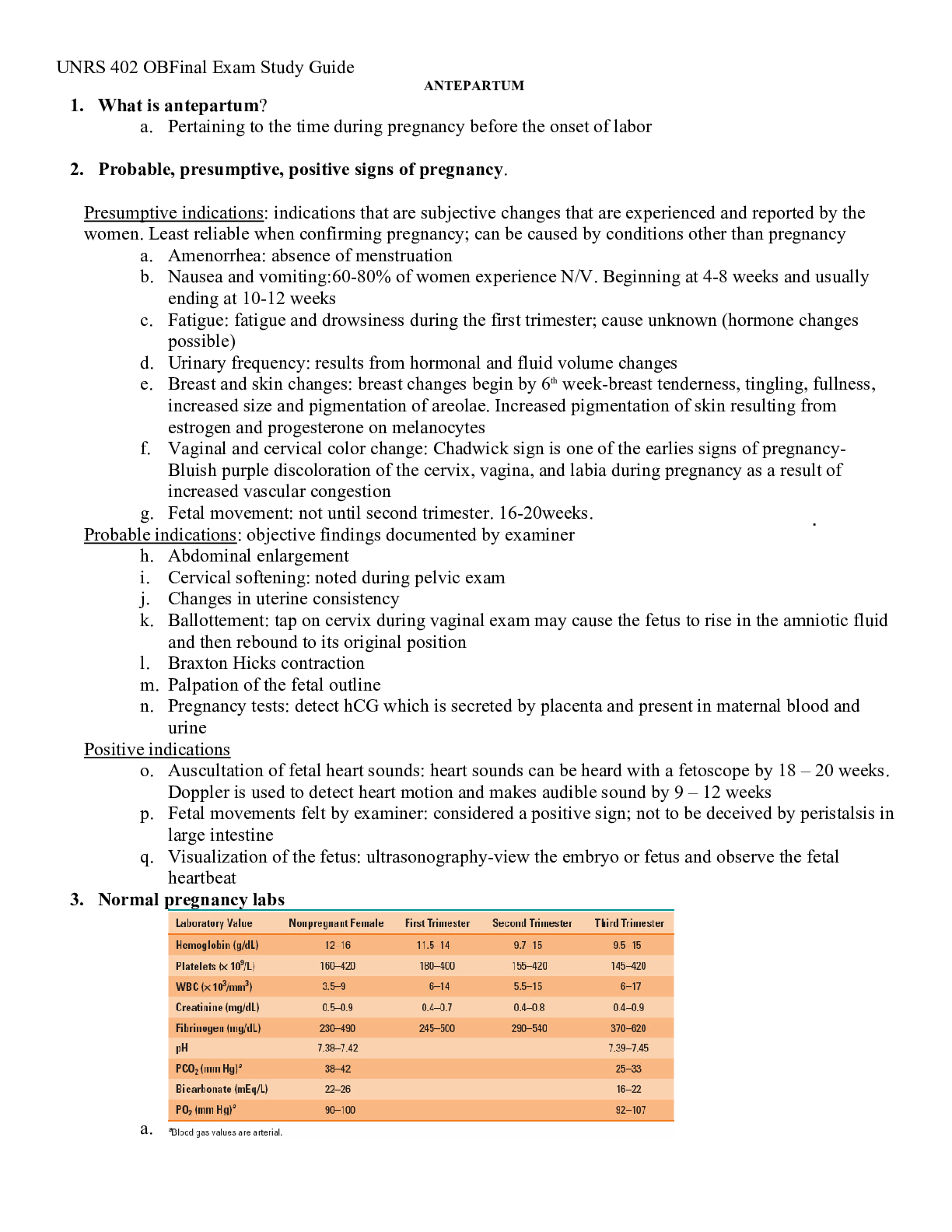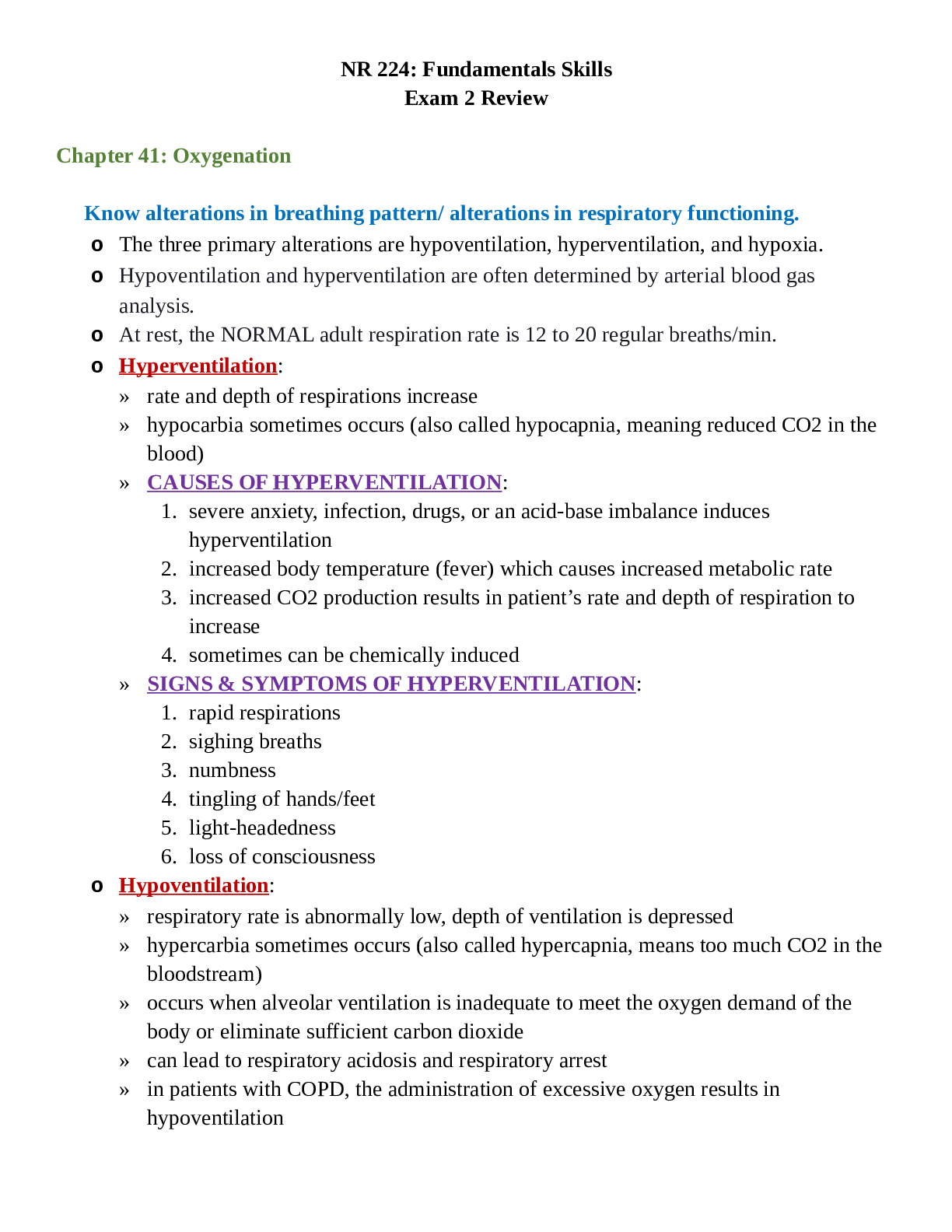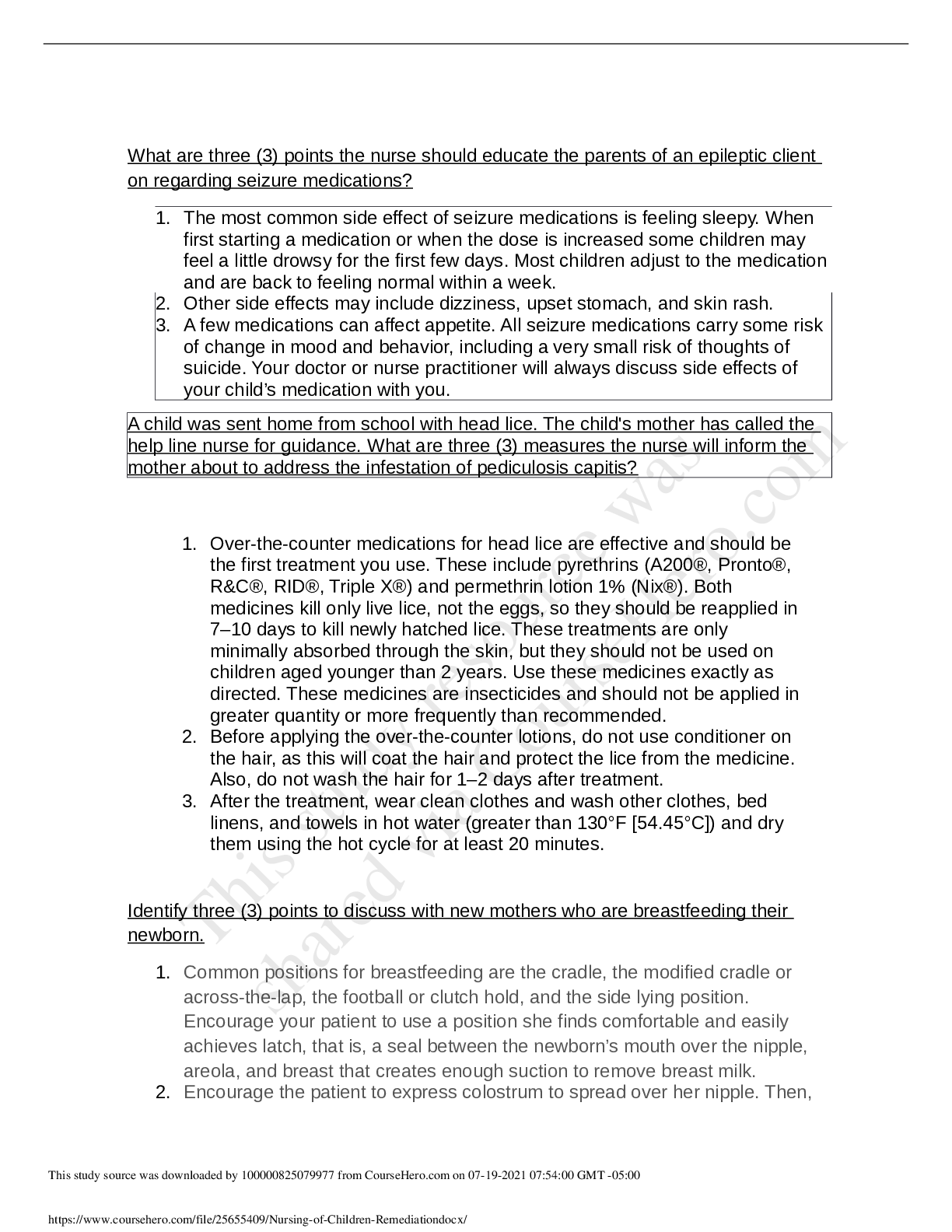Chemistry > EXAM REVIEW > CHEM 120 EXAM REVIEW GUIDE- DOWNLOAD TO SCORE AN A+ (All)
CHEM 120 EXAM REVIEW GUIDE- DOWNLOAD TO SCORE AN A+
Document Content and Description Below
CHEM 120 EXAM REVIEW GUIDE- DOWNLOAD TO SCORE AN A+ Week 1 Topics: Scientific method Hypothesis: A testable explanation. Independent variable: What you as the scientist are controlling or chan... ging. Dependent variable: Depends on the independent variable. What you expect to change. What you are measuring. Positive control: Group or condition with known outcome. Negative control: Condition for which no change is expected. Experimental controls: All the conditions that are held constant. Dimensional Analysis DA Tips • Always, ALWAYS, write your units • Memorize the conversions (Powerpoint and Edapt) o Imperial to metric (Gal to L, tsp to ml, etc) o Metric prefixes (1000 mx = 1 x, 100 cx = 1x) • Always set up your start and end point before using conversions Examples: 1. I have a book with a weight of 0.46 lbs. What is the mass of this book in kg? Answer: 0.46 lbs 1 kg 0.21 kg 2.2 lbs 2. I have a sample of a fluid with a volume of 670 ml. What is the volume of this sample in gal? Answer: 670 ml 1 L 1 gal 0.18 gal 1000 mL 3.785 L 3. I have a sample that diffused to a diameter of 0.2 inches. What is this diameter in mm? Answer: 0.2 inch 2.54 cm 1 m 1000 mm 5.08 mm 1 inch 100 cm 1 m Do not forget about density! Atoms What do we know about atoms? • Atoms are the smallest unit of an element that remain that element • Made of protons, neutrons, and electrons • They can combine to form molecules • An atom’s identity is determined by the atomic number (number of protons) • Atoms of elements are represented by chemical symbols (Al, U, Mg, etc.) • Different atoms of a given element can exist as Isotopes. These are atoms of the same element that differ based on their mass number Subatomic particles and their relationships • Protons, +1 charge, 1 AMU mass • Neutron, 0 charge, 1 AMU mass • Electron, -1 charge, ~0 AMU mass • Atomic number is the number of protons • An atom on the periodic table has the same number of electrons as it does protons by default • Neutrons + Protons = Mass Number • Atomic number is an average of the masses of atoms of an element, taking abundance of each isotope into account Applications: 1. I have an isotope with an atomic number of 48 and a mass number of 130. How many protons, electrons, and neutrons would I expect this atom to have, and what is this element? Answer: 48 protons because of atomic number(# of protons) of 48 48 electrons as we are assuming this is not an ion and therefore, we expect the protons and electrons to balance out. Since mass number is p + n = A, then n= A-p = 130 – 48 p = 82 neutrons Element is Cd based on the 48 atomic number (DO NOT Identify based on atomic mass) 2. I have an isotope of Oxygen with 9 neutrons. What is the mass number of this isotope? Answer: I know oxygen must have 8 protons because protons determine the element. So: p + n = A = 8 p + 9 n = 17 So the mass number of this isotope is 17. Ions What do we know about ions? • Charged particle (atom or molecule) • Ions arise from an imbalance of protons and electrons due to the loss or gain of electrons • Cations have a positive charge • Anions have an negative charge • Ions form to have a more stable, Nobel gas like configuration (8 valance electrons) • They form to be like the nearest Nobel gas • Are great electrical conductors Applications: 1. What would be the charge of an ion of oxygen? Answer: O is in the 6th column of the periodic table, so we will expect it to gain a -2 charges as an ion. We could also know this as it will follow the octet rule: O has 6 valance electrons and will gain two more electrons (each with a -1 charge) to get to 8 valance electrons. This will give us a -2 charge. This will make oxygen have a similar electron configuration to Neon, the nearest Nobel gas on the periodic table. 2. What would be the electron configuration of an Mg ion? Answer: Mg normally has an electron configuration of 1s2 2s2 2p6 3s2. As an ion, Mg, being a metal, will lose two electrons, giving the resulting Mg ion, a +2 charge. Since we removed to electrons, this change must be reflected in the electron configuration: Mg2+: 1s2 2s2 2p6 will be the electron configuration as we took away the two electrons in the 3s2 orbital. 3. How many valance electrons (outermost electrons) will each of the following have? a. Na Answer: 1 b. H Answer: 1 c. Be2+ Answer: 2 valance electrons as this is like He, nearest Nobel gas d. N3- Answer: N starts with 5 valance electrons, the -3 means we have 3 additional electrons, so we have a total of 8 valance electrons e. S Answer: 6 f. I- Answer: I starts with 7 valance electrons, the -1 means we have 1 additional electron, so we have a total of (7+ 1) = 8 valance electrons Lewis dot structure Dots represent valance electrons We have 4 orbitals, each able to hold two dots (valance electrons) We want to add only one electron to each orbital until we run out of orbitals, then we can pair. This is because electrons repel. Examples: Lewis dot structure for carbon: Lewis dot structure for Iodine: Lewis dot structure for Oxygen: Lewis dot structure for Phosphide: Phosphide would have a 3- charge: P3- so: Lewis dot structure of H2O: Polarity: These terms are only, ONLY, used for covalent bonds. NOT IONIC Polar: Unequal sharing Nonpolar: Equal sharing Polarity examples. Identify each of the following as containing polar or non-polar bonds: • N2O4 polar • S8 nonpolar • SBr2 polar • O3 nonpolar • O2 nonpolar • PF3 polar 1. Which of the below contains a polar bond? Select all that apply. a. N2 b. NBr3 c. O4F3 d. MgBr2 e. Na2O Answer: only b and c. d and e are both IONIC bonds, and a is a nonpolar bond. Ionization energy: Refers to the energy need to remove an electron from an atom of a given element. As we move from the lower left to the upper right, ionization energy increases. Determine which of the following would have the greater ionization energy: • Fr and Br Br • O and Pb O • F and P F Electron configuration: This tells us where the electrons in an atom are residing. • Number in front: Shell/Principle energy level (Corresponds to the rows of the periodic table) • Letter: Sublevel or subshell. (s holds 2 electrons, p holds 6, d holds 10, and f holds 14) • Superscript: number of electrons currently in that sublevel. Remember, ions have different electron configurations then their base forms. Specifically, cations have fewer electrons, and anions have more electrons then their base configuration. NOTE: the elctron configurations of ions will resemble Noble gasses (Filled valance shell). In other words, mostly they should have 8 electrons (Octet Rule). Remember also that the very early atoms near He will only have 2. Determine the electron configurations of each of the following and determine the number of valance electrons: • Sodium ion Na: 1s22s22p6 8 valance electrons (Nobel gas like) • He He: 1s2 2 valance electrons (Nobel gas) • Li+ Li+: 1s2 (note the similarity to He, Li’s nearest Nobel gas) 2 v elec • S S: 1s22s22p63s23p4 6 valance electrons • O2- O: 1s22s22p6 8 valance electrons (Nobel gas like) • P P: 1s22s22p63s23p3 5 valance electrons • Ar Ar: 1s22s22p63s23p6 8 valance electrons (Nobel gas) [Show More]
Last updated: 2 weeks ago
Preview 1 out of 6 pages
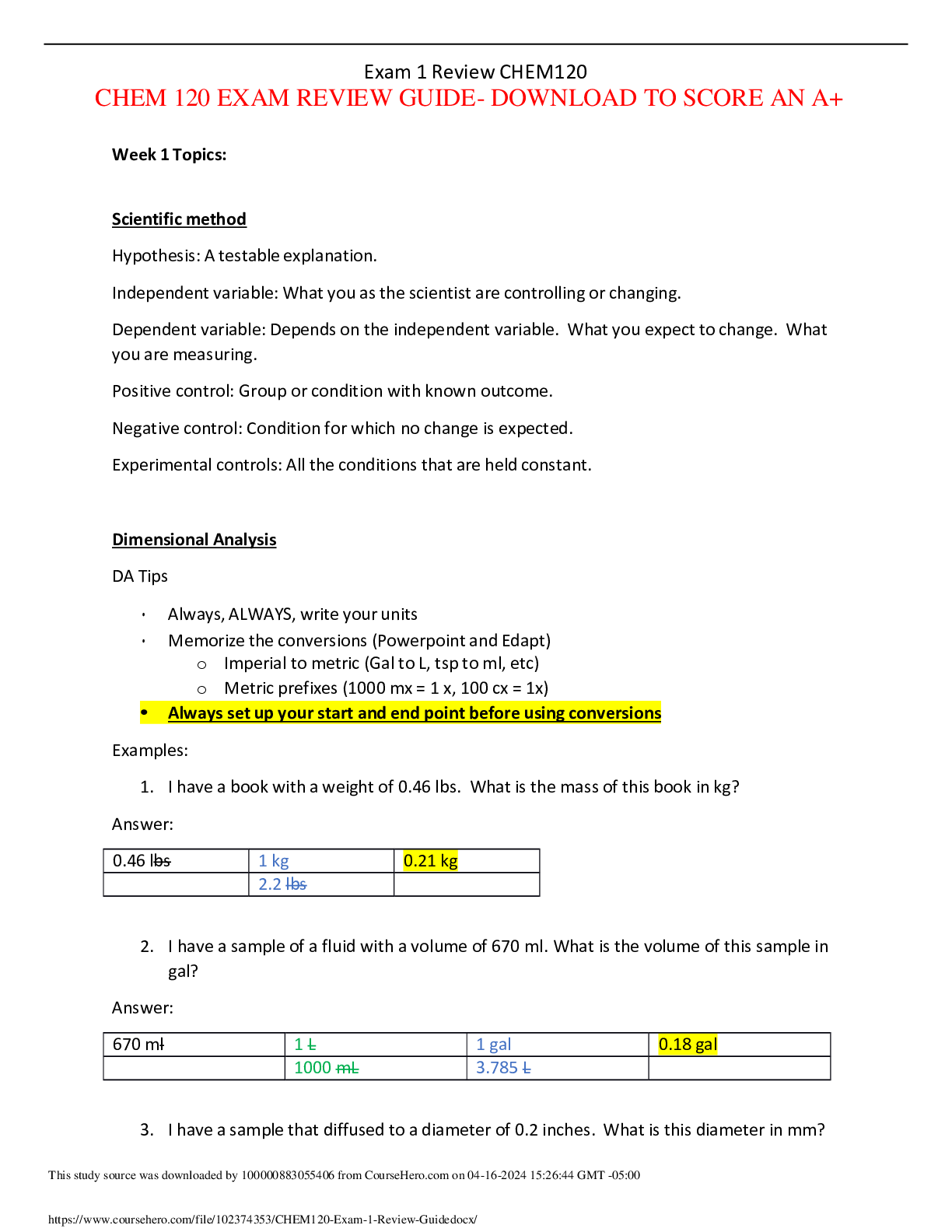
Reviews( 0 )
Document information
Connected school, study & course
About the document
Uploaded On
Apr 18, 2024
Number of pages
6
Written in
Additional information
This document has been written for:
Uploaded
Apr 18, 2024
Downloads
0
Views
6


